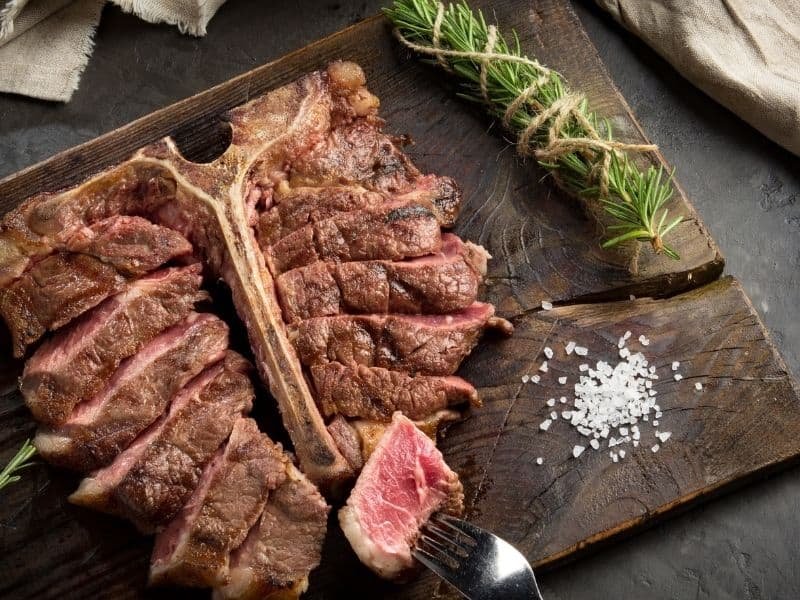Are you trying to decide between salmon and basa for your next meal? Both fish are popular choices and have unique nutritional profiles.

Understanding Salmon and Basa
When it comes to seafood, salmon, and basa are two popular options that you might consider. Here’s what you need to know about these fish:
Salmon
Salmon is a type of fish that is known for its rich, buttery flavor.
It is a popular choice for many recipes, including sushi, grilled fillets, and smoked salmon. Salmon is also high in healthy omega-3 fatty acids, vitamin D, and protein. You can find wild-caught and farmed salmon in stores and restaurants.
Wild-caught salmon is generally considered the healthier option, as it is less likely to contain contaminants and has a more natural diet. Farmed salmon is often less expensive and more widely available, but it may contain higher levels of pollutants and antibiotics.
Basa

Basa (Pangasius bocourti) is a type of white fish that is native to Southeast Asia.
It has a mild, delicate flavor that makes it a popular choice for fish fillets and fish sticks. Basa is also more affordable than salmon, making it an excellent option for those on a budget. However, there are some concerns about the safety of basa fish.
Some studies have found that basa fish may contain high levels of contaminants, such as heavy metals and pesticides. It is important to choose basa that has been responsibly farmed and tested for contaminants.
Here are some key differences between salmon and basa:
- Salmon is a fatty fish that is high in omega-3 fatty acids, which are essential for brain and heart health. Basa, on the other hand, is a lean fish with lower levels of omega-3s.
- Salmon has a stronger flavor than basa, which has a milder taste and is often used as a cheaper alternative to cod or haddock.
- Salmon is typically wild-caught, while basa is often farmed. This can affect the nutritional content and quality of the fish.

Nutritional Comparison
Protein Content
- Salmon is a great source of high-quality protein, providing around 22-25 grams of protein per 3-ounce serving.
- Basa fish also contains a good amount of protein, with around 15-20 grams of protein per 3-ounce serving.
Fat Content
- Salmon is known for its high omega-3 fatty acid content, which is essential for heart health. A 3-ounce serving of salmon contains around 1.5-2.5 grams of omega-3s.
- Basa fish, on the other hand, is lower in omega-3s, with only around 0.5 grams per 3-ounce serving. However, it is still a good source of healthy fats, with around 6-8 grams of total fat per serving.
Calorie Count
- Salmon is a relatively low-calorie food, with around 120-150 calories per 3-ounce serving.
- Basa fish is also relatively low in calories, with around 100-120 calories per 3-ounce serving.
Vitamin and Mineral Content
- Salmon is a good source of several important vitamins and minerals, including vitamin D, selenium, and B vitamins such as B12 and niacin.
- Basa fish is also a good source of several vitamins and minerals, including selenium, vitamin B12, and potassium.

Cooking and Taste Comparison
- Taste: Salmon has a rich, buttery flavor often described as “meaty” or “oily.” Basa, on the other hand, has a milder taste that is often compared to catfish or tilapia. Both fish can be delicious when prepared properly, but they have distinct flavor profiles that may appeal to different palates.
- Fillets: Both salmon and basa are available in fillet form, making them easy to cook and serve. Salmon fillets are typically thicker and meatier, while basa fillets are thinner and more delicate. Keep this in mind when choosing a recipe and adjusting cooking times.
- Substitute: If you’re looking for a substitute for salmon, basa can be a good option. It has a similar texture and can be prepared in many of the same ways. However, remember that the taste will be different, so adjust seasonings and spices accordingly.
- Recipes: Salmon and basa can be used in a variety of recipes, from simple grilled fillets to more complex dishes like fish tacos or seafood stews. Here are a few ideas to get you started:
- Grilled salmon with lemon and herbs
- Baked basa with garlic and butter
- Salmon burgers with avocado and spicy mayo
- Basa curry with coconut milk and spices
- Salmon poke bowl with rice and veggies
Remember, the key to cooking both salmon and basa is to not overcook them. Fish is delicate and can easily become dry and tough if left on the heat for too long. Keep an eye on your fillets and use a meat thermometer to ensure that they are cooked to the proper temperature.
Tips
Selecting and Buying
- Look for fresh fish with clear, bright eyes, and shiny skin.
- The flesh should be firm to the touch and have a mild sea-like smell.
- Choose fillets or steaks that are evenly colored without any discoloration or dark spots.
- If buying frozen fish, make sure the packaging is intact and the fish is frozen solid.
Preparing
- Rinse the fish under cold water to remove any impurities.
- Pat the fish dry with a paper towel to remove excess moisture.
- Remove any scales using a knife or a fish scaler.
- Trim off any dark areas or bloodlines if desired.
Cooking
- For salmon, try grilling, baking, broiling, or pan-searing for a crispy skin and moist flesh.
- Season the fish with your choice of herbs, spices, or marinades to enhance the flavor.
- Cook until the flesh is opaque and flakes easily with a fork.
- Basa fish is delicate and has a mild taste, so it’s best suited for baking, poaching, or pan-frying.
- Avoid overcooking the fish, as it can make it dry and less flavorful.
Storing
- If not using immediately, store fresh fish in the refrigerator at or below 40°F (4°C).
- Place the fish in a sealed container or wrap it tightly in plastic wrap to prevent odors and cross-contamination.
- Consume fresh fish within two days for optimal quality.
- Frozen fish can be stored for several months in airtight containers or freezer bags.
- Thaw frozen fish in the refrigerator overnight or use the defrost setting on your microwave.
Remember, these tips can vary depending on personal preferences and local regulations. Enjoy your salmon and basa fish preparations!












